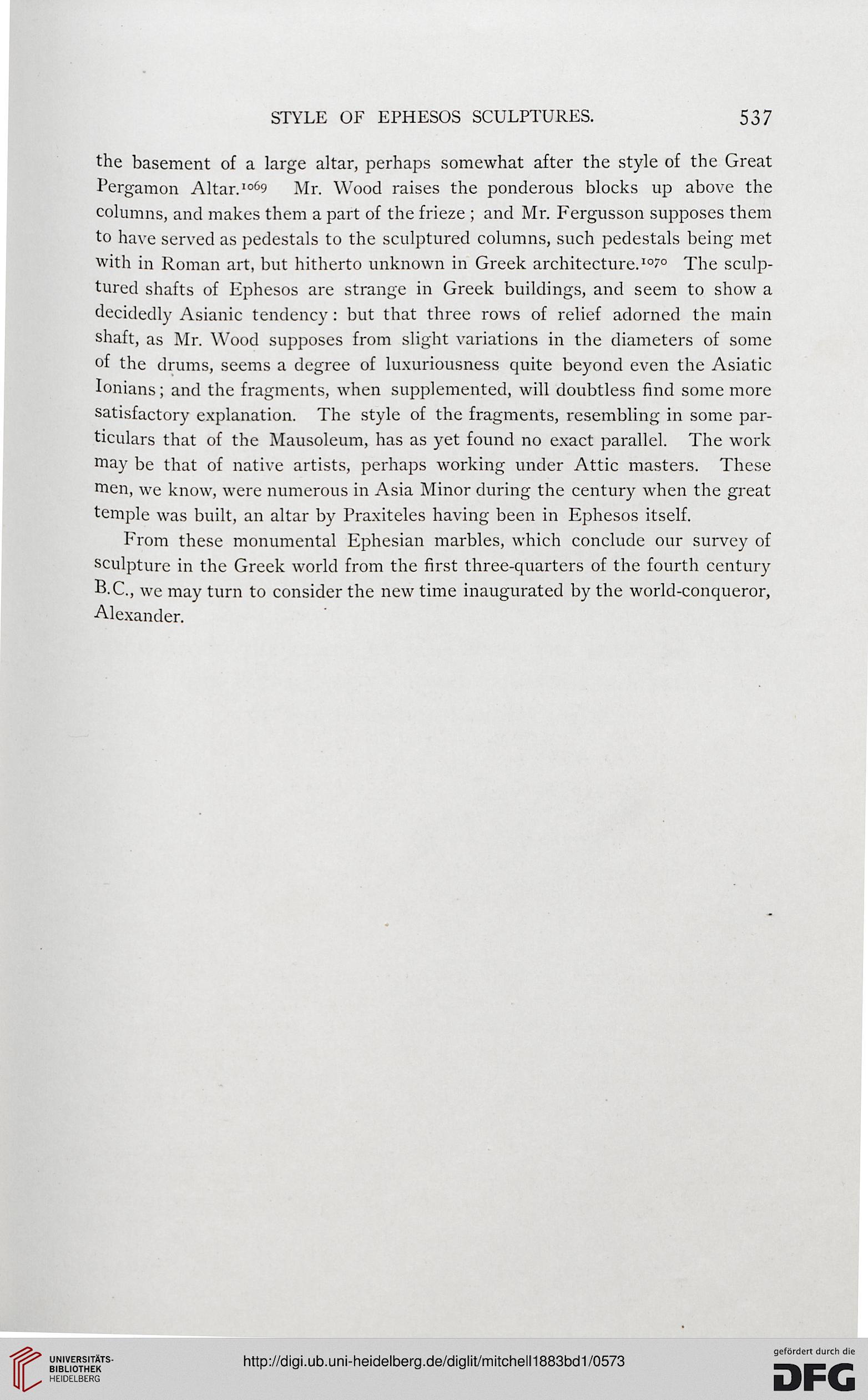STYLE OF EPHESOS SCULPTURES. 537
the basement of a large altar, perhaps somewhat after the style of the Great
Pergamon Altar.1000 Mr. Wood raises the ponderous blocks up above the
columns, and makes them a part of the frieze ; and Mr. Fergusson supposes them
to have served as pedestals to the sculptured columns, such pedestals being met
with in Roman art, but hitherto unknown in Greek architecture.10?0 The sculp-
tured shafts of Ephesos are strange in Greek buildings, and seem to show a
decidedly Asianic tendency: but that three rows of relief adorned the main
shaft, as Mr. Wood supposes from slight variations in the diameters of some
°f the drums, seems a degree of luxuriousness quite beyond even the Asiatic
lonians; and the fragments, when supplemented, will doubtless find some more
satisfactory explanation. The style of the fragments, resembling in some par-
ticulars that of the Mausoleum, has as yet found no exact parallel. The work
may be that of native artists, perhaps working under Attic masters. These
men, we know, were numerous in Asia Minor during the century when the great
temple was built, an altar by Praxiteles having been in Ephesos itself.
From these monumental Ephesian marbles, which conclude our survey of
sculpture in the Greek world from the first three-quarters of the fourth century
B.C., we may turn to consider the new time inaugurated by the world-conqueror,
Alexander.
the basement of a large altar, perhaps somewhat after the style of the Great
Pergamon Altar.1000 Mr. Wood raises the ponderous blocks up above the
columns, and makes them a part of the frieze ; and Mr. Fergusson supposes them
to have served as pedestals to the sculptured columns, such pedestals being met
with in Roman art, but hitherto unknown in Greek architecture.10?0 The sculp-
tured shafts of Ephesos are strange in Greek buildings, and seem to show a
decidedly Asianic tendency: but that three rows of relief adorned the main
shaft, as Mr. Wood supposes from slight variations in the diameters of some
°f the drums, seems a degree of luxuriousness quite beyond even the Asiatic
lonians; and the fragments, when supplemented, will doubtless find some more
satisfactory explanation. The style of the fragments, resembling in some par-
ticulars that of the Mausoleum, has as yet found no exact parallel. The work
may be that of native artists, perhaps working under Attic masters. These
men, we know, were numerous in Asia Minor during the century when the great
temple was built, an altar by Praxiteles having been in Ephesos itself.
From these monumental Ephesian marbles, which conclude our survey of
sculpture in the Greek world from the first three-quarters of the fourth century
B.C., we may turn to consider the new time inaugurated by the world-conqueror,
Alexander.




